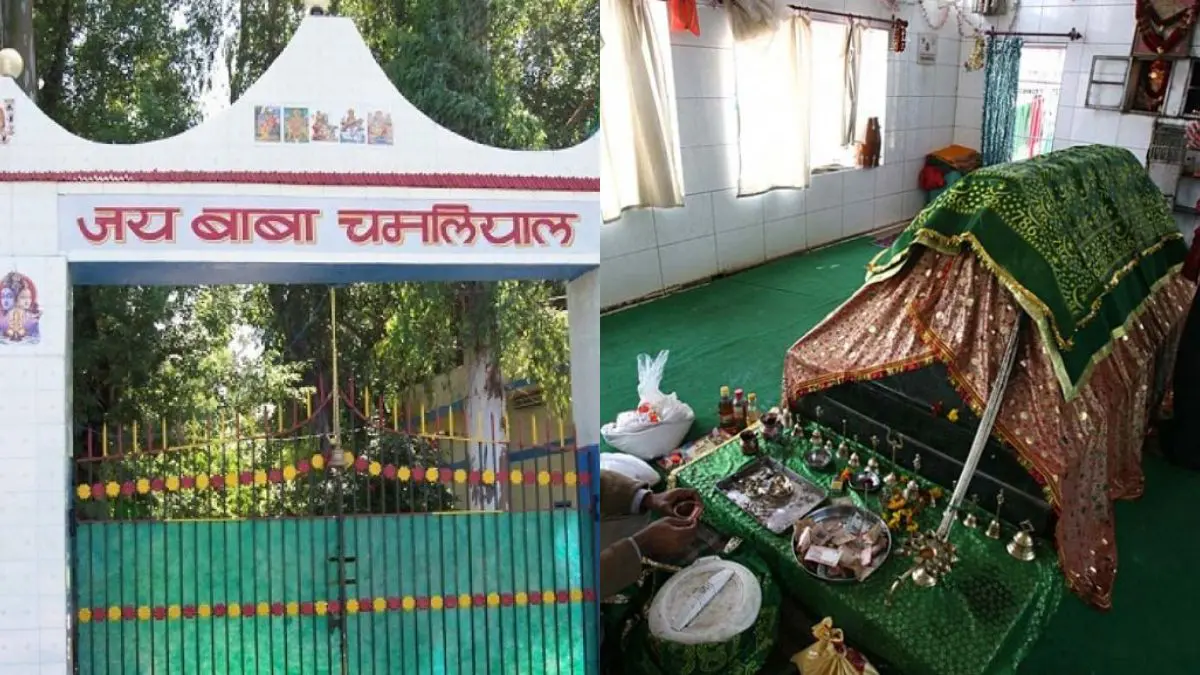Baba Chamliyal, widely known as the “Healing Touch Saint,” is a revered figure in the region of Jammu and Kashmir, particularly in the village of Chamliyal in the Samba district. His legacy, which dates back over 320 years, is celebrated for his miraculous healing powers, especially in curing skin diseases. His story and the traditions associated with him continue to inspire a sense of unity and spiritual devotion across religious and national borders.
Early Life and Spiritual Influence
Baba Chamliyal is believed to have been born in the village of Chamliyal, where he spent his life dedicated to serving the community and offering spiritual guidance. Although specific details about his early life are sparse, the legends surrounding him paint a picture of a saint deeply connected to the land and its people. His teachings emphasised compassion, humility, and service to all, regardless of their religious or social background.
His ability to cure skin diseases and other ailments earned him the affectionate title of “Healing Touch Saint.” The exact nature of his healing powers remains a matter of faith for many, but countless testimonies from devotees suggest that his blessings were truly transformative. Baba Chamliyal’s reputation as a healer spread far and wide, drawing people from various regions who sought his help for their ailments.
The Shrine of Baba Chamliyal
The shrine of Baba Chamliyal, located at the international border between India and Pakistan, is unique not only for its geographical positioning but also for its cultural and spiritual significance. The shrine serves as a bridge between two nations, symbolising peace and harmony. It has become a focal point for pilgrims from both India and Pakistan, who come to pay their respects and seek blessings.
Architectural and Cultural Significance
The architecture of the shrine is simple yet evocative, reflecting the humility and spiritual depth of Baba Chamliyal’s teachings. The shrine’s central courtyard is often filled with devotees who come to participate in the rituals and offer prayers. The surrounding area is lush with vegetation, adding to the serene and tranquil atmosphere that characterises this sacred place. The shrine’s significance is further underscored by its role as a cultural hub, where people from diverse backgrounds and beliefs come together, fostering a sense of unity and brotherhood.
The Annual Mela and Its Traditions
The annual Baba Chamliyal Mela is one of the most significant events in the region, drawing thousands of devotees from both sides of the border. Held every year in June, the mela is not just a religious gathering but also a celebration of cultural diversity and communal harmony. The fair is marked by vibrant processions, devotional singing, and various cultural performances that showcase the region’s rich heritage.
The Healing Shakkar and Sharbat
One of the most distinctive traditions of the mela is the distribution of “Shakkar” (sacred soil) and “Sharbat” (holy water) from the shrine. Devotees believe that these items possess healing properties, particularly for skin diseases. According to local lore, Baba Chamliyal himself blessed the soil and water, infusing them with his healing powers. The soil is often mixed with water to create a paste that is applied to the affected areas of the skin, while the “Sharbat” is consumed by the devotees.
The Indian Border Security Force (BSF) and the Pakistan Rangers partake in the annual ritual of exchanging “Shakkar” and “Sharbat” across the border, a gesture that symbolizes goodwill and mutual respect. This cross-border exchange is a testament to the shrine’s role in promoting peace and understanding between the two countries, even in times of political tension.
Healing Powers and Spiritual Legacy
Baba Chamliyal’s reputation as a healer remains central to his legacy. He was known for his ability to cure not only people but also animals suffering from various skin ailments. His healing powers are believed to be a divine gift, and many stories recount miraculous recoveries attributed to his blessings. For over three centuries, the shrine has been a destination for those seeking relief from physical ailments and spiritual solace. The faith and devotion of the pilgrims are seen as a continuation of Baba Chamliyal’s compassionate spirit, which transcends the boundaries of time and geography.
A Symbol of Unity and Communal Harmony
One of the most remarkable aspects of Baba Chamliyal’s legacy is his role in fostering communal harmony. His shrine is a place where people from different religious backgrounds—Hindus, Muslims, Sikhs, and others—come together, reflecting the saint’s message of peace, unity, and brotherhood. The shared reverence for Baba Chamliyal demonstrates how spirituality can serve as a unifying force, bridging divisions and bringing communities closer.
Conclusion
Baba Chamliyal’s enduring legacy as the “Healing Touch Saint” continues to inspire and bring together people from diverse backgrounds. His shrine stands as a beacon of hope, healing, and unity in a region often marked by conflict and division. Through his teachings and the traditions that have grown around his memory, Baba Chamliyal remains a symbol of compassion, healing, and the enduring power of faith.
His story is a reminder of the universal values of love, peace, and service to humanity, transcending all boundaries and inspiring generations to come.
Sahil Razvi is an author and research scholar specialising in Sufism and history. He is an alumnus of Jamia Millia Islamia. For inquiries, you can email him at sahilrazvii@outlook.com.
